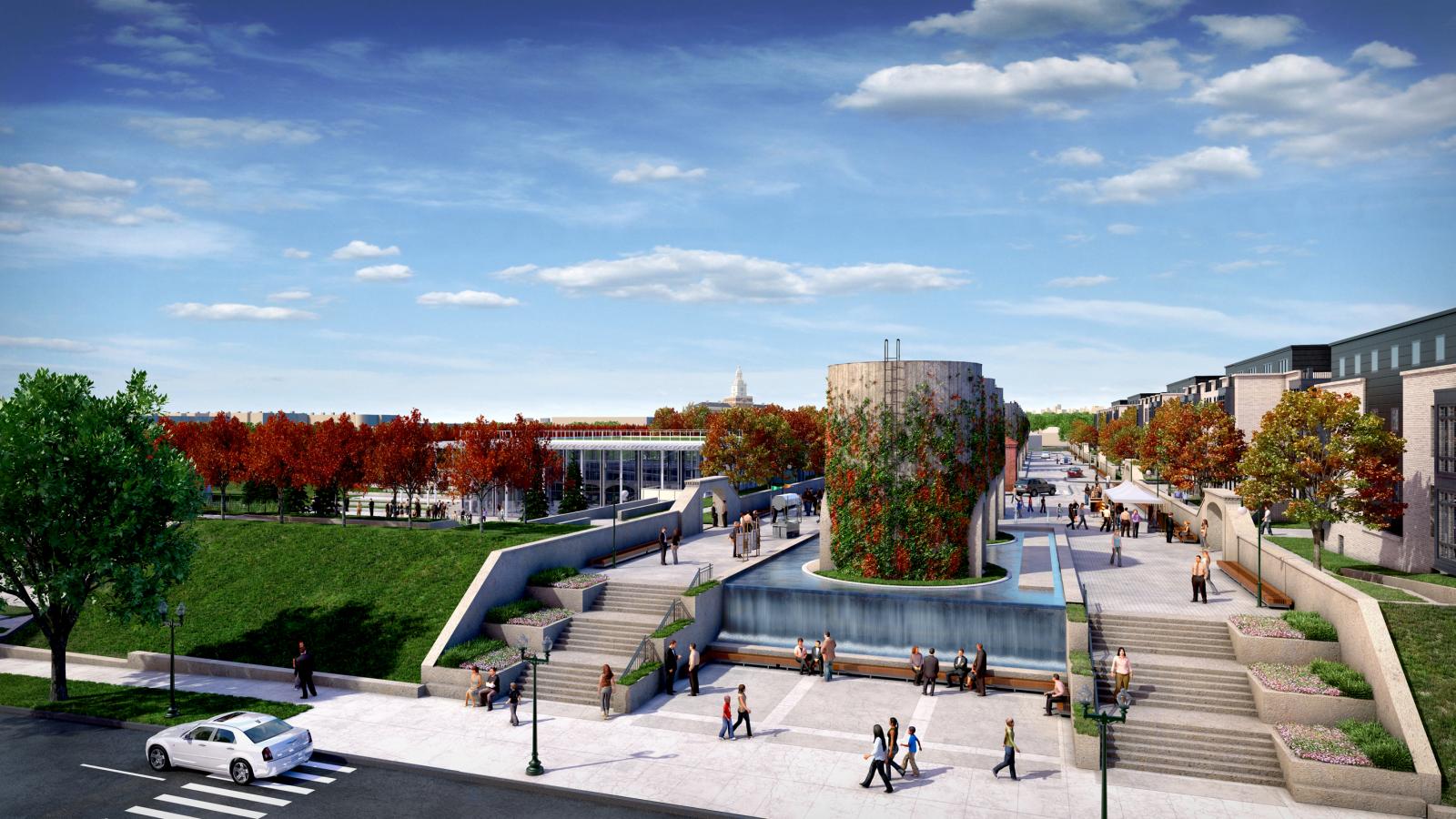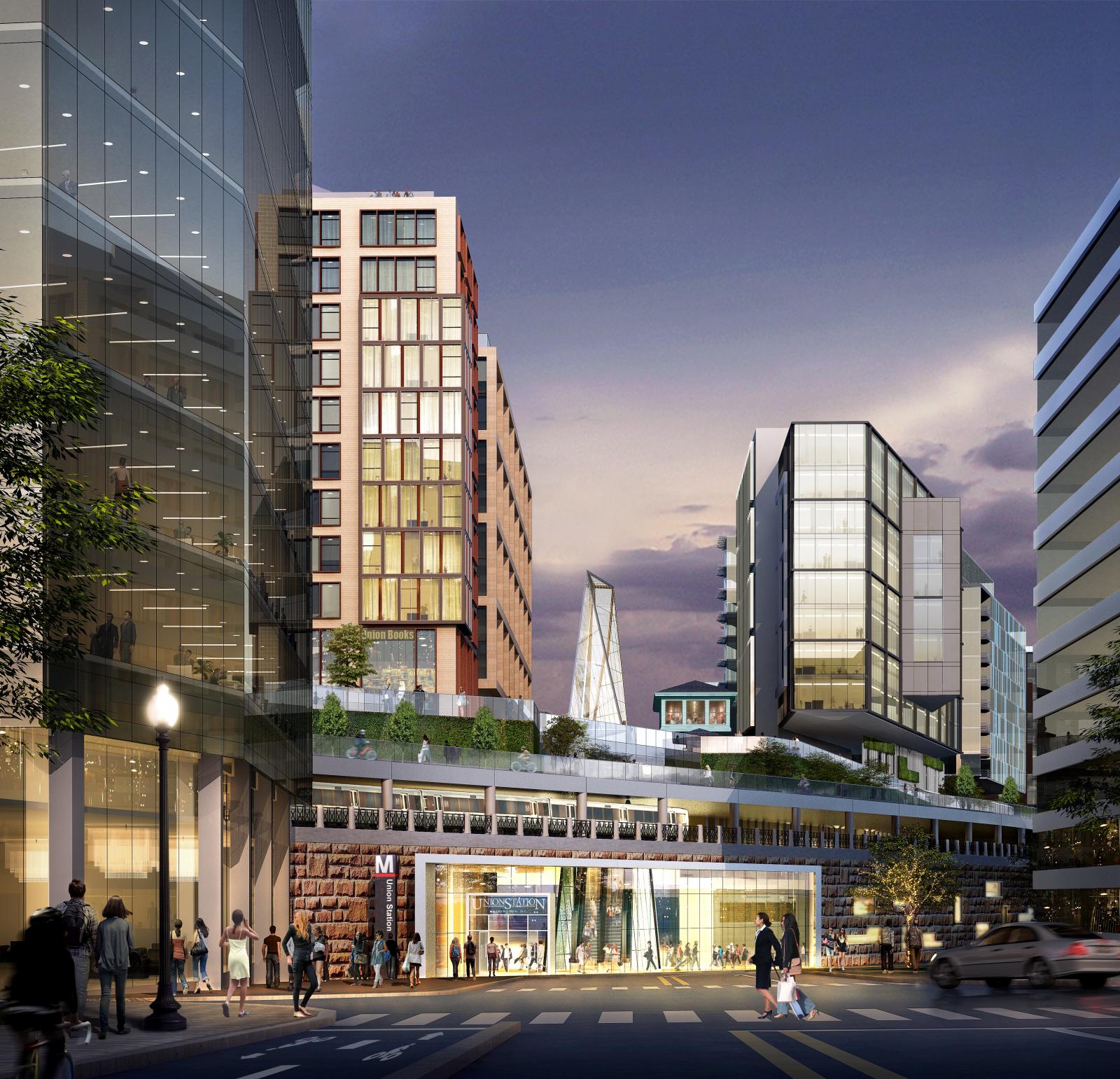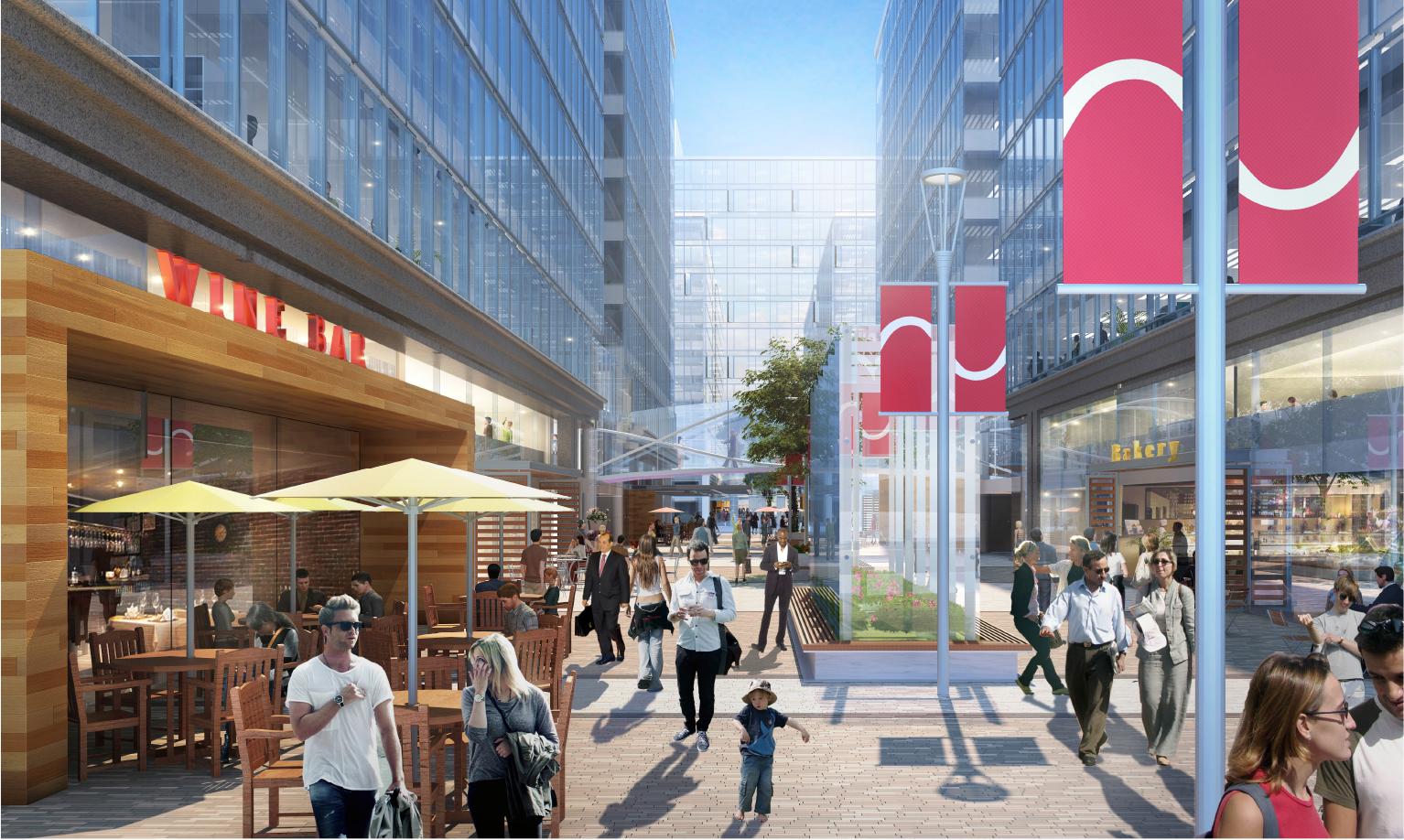3835 Campus Drive
Architecture Building (145 ARC)
College Park, MD 20742
United States
reVISION::Thinking Big focuses on five phased, mixed-use projects currently in design, in the final stages of development review, or under construction: The Yards, The Wharf, Burnham Place at Union Station, Capitol Crossing, and McMillan. Organized around three themes—reconnecting to the water, building above barriers, and repurposing public works—the exhibition examines the theories and context behind each project’s design as well as the complexity inherent in projects of such vision and scope.
Highways, rail yards, industrial sites, and relics of mid-twentieth century urban renewal have long posed significant physical barriers in Washington, DC. These uses have been inserted into and disrupted the city’s historic street/block pattern conceived by Pierre L’Enfant, severing public access to the Potomac and Anacostia Rivers, and occupying large swaths of its neighborhoods. In the first decades of the twenty-first century, planning efforts coupled with economic resurgence and population growth have generated new opportunities and ideas about how these disconnections can be repaired. The potential for reconnecting the city’s fabric has sparked development interest in—and a new vision for—urban sites overlooked or once considered too difficult and inaccessible.
The five projects are large in scale and express a grand vision for their place in the city—consistent with Washington as a city of grand visions. The first was defined by the L’Enfant Plan of 1791, which laid out a capital of broad diagonal avenues and a grid of streets with a core of civic buildings and a central green. The McMillan Plan of 1901 reinforced the central elements of the L’Enfant Plan and led to the National Mall we know today. A well-intentioned but less successful vision for the city was the urban renewal program of the mid-twentieth century that intended to revitalize the city but sacrificed a Southwest neighborhood.
The projects are ambitious. They envision reconnection; redevelopment of sites characterized by obsolete or inappropriate uses; and transformation of these sites into economically vibrant destinations for living, working, shopping, and recreation. Several of the projects repair the historic fabric of the L’Enfant Plan frayed by earlier development. Others look beyond the historic core.
The projects are ambitious. They envision reconnection; redevelopment of sites characterized by obsolete or inappropriate uses; and transformation of these sites into economically vibrant destinations for living, working, shopping, and recreation. Several of the projects repair the historic fabric of the L’Enfant Plan frayed by earlier development. Others look beyond the historic core.
These projects will be completed over time—as cities typically evolve—yet result from years of planning and review involving not only private developers but also public partnerships and multiple stakeholders, including myriad federal and local agencies, city residents, and civic organizations.
Marvin Breckinridge Patterson Historic Preservation Lecture + Panel Discussion
McMillan: a Design Vision for Preservation, Development and Open Space in Washington, DC
Wednesday, April 20th 5:45 PM
Architecture Auditorium
Lecturer: Matthew Bell, FAIA, UMD Professor
Panelists:
Matthew Bell, FAIA + Christian Calleri, AIA - Perkins Eastman
Emily Eig, President/CEO - EHT Traceries
Steve Callcott - D.C. Historic Preservation Office
Kirk Mettam, PE, Executive Vice President - Silman
Carolyn Brown, J.D. - CastroHaase+Brown
Anne Corbett - Vision McMillan Partners
Jeff Aten, PLA, CLARB, ASLA - Nelson Byrd Woltz
Ryan Brannan - Bowman Consulting Group
Credits
Organized and installed by Kibel Gallery
Organized by AIA|DC for the SIGAL Gallery and Sorg Gallery. Production made possible by ABC Imaging. Designed and modeled in ArchiCAD18.
AIA|DC/District Architecture Center: Mary Fitch, AICP, Hon. AIA, Executive Director; Daniel Fox, Assistant Director.
Exhibition Committee: David Haresign, FAIA, Bonstra|Haresign ARCHITECTS, Chairman; Matthew Bell, FAIA, Perkins Eastman; Mark Gilliand, FAIA, Shalom Baranes Associates; Roger K. Lewis, FAIA, Professor Emeritus, University of Maryland; William Powers, AIA, Skidmore, Owings & Merrill LLP; Lee Quill, FAIA, Cunningham+Quill Architects; Rita Abraham Yurow, Sorg Architects
Curator: Mary Konsoulis, AICP, Consulting for Creative Community
Exhibition Designer: Scott Clowney, AIA|DC/District Architecture Center
Graphic Designer: Jennifer Byrne, Live.Create.Play.LLC
Digital Information Coordinator: Bradley W. Johnson, AIA|DC/District Architecture Center
Location Maps by Taylor Stout, Graduate Student in Architecture and Real Estate Development, University of Maryland
History/Analysis PowerPoint Videos by the Graduate Architecture Seminar in Urban Design, University of Maryland, Prof. Matthew Bell, FAIA: Christopher Allen, Lubna Chaudhry, Golnar Ershad, Elizabeth Hampton, Kara Johnston, David Leestma, Luke Petrocelli, Shira Rosenthal, Siobhan Steen, Arica Thornton, Nader Wallerich, Richard Watt.
Sponsors
reVISION::Thinking Big is made possible by the generous support of the following sponsors:
AECOM
Akridge
Beyer Blinder Belle
Bonstra | Haresign ARCHITECTS
Cunningham | Quill Architects
Hoffman Madison
Jair Lynch Development Partners
Kevin Roche John Dinkeloo and Associates, LLC
Kohn Pederson Fox
LAB Inc.
Lee & Associates
Michael Vergason Landscape Architects, Ltd.
MV+A Architects
Nelson Bryd Woltz Landscape Architects
Perkins Eastman
Property Group Partners
Shalom Baranes Associates, Architects
Silman
Skidmore, Owings & Merrill LLP









